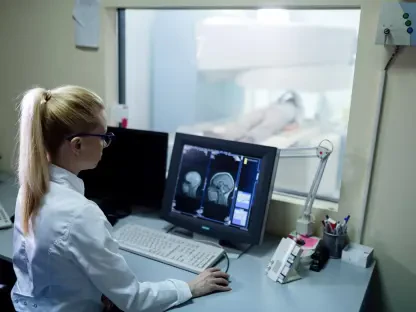The University of Otago, a prestigious institution with a legacy spanning 150 years in training medical professionals, has recently extended its congratulations to the Honorable Simeon Brown on his new appointment as Minister of Health. Vice-Chancellor Grant Robertson highlights the crucial role of the health sector in the nation’s overall well-being and underscores Otago’s significant contributions in cultivating future doctors. This longstanding commitment to medical education positions Otago University as a potential key player in addressing New Zealand’s pressing doctor shortage. Robertson’s optimism is also reflected in the university’s readiness to expand its medical training capacity, a move contingent upon government support through the lifting of current restrictions on student numbers and the provision of necessary funding.
The Urgent Need for More Doctors
New Zealand’s healthcare system is currently strained by an urgent need for more trained doctors, creating an opportunity for Minister Brown to take decisive action. Vice-Chancellor Robertson underscores the need for immediate solutions and highlights Otago University’s preparation to scale up its medical training programs, provided the government lifts existing caps on student numbers and allocates the necessary resources. As part of its response, Otago University is poised to leverage its extensive heritage and proven expertise in medical education to help bridge the gap in the nation’s healthcare workforce.
Otago University’s lengthy experience in training doctors, backed by substantial expertise and accredited programs, presents a robust foundation for expanding its medical training capacity. The institution’s commitment to excellence in medical education has equipped it with the resources necessary for scaling up efficiently. However, this potential can only be realized if the government removes current limitations on the number of funded domestic students. Such expansion reflects Otago University’s readiness to contribute significantly to addressing the nation’s healthcare needs by increasing the number of qualified medical professionals.
Current Limitations and Potential for Expansion
Presently, one of the primary constraints facing Otago University in training more doctors is the government-imposed cap on the number of funded domestic students. Otago has demonstrated its willingness and capability to train additional doctors, yet it is hampered by these restrictions. The university has expressed its readiness to increase its annual intake from 302 to 348 students initially, with a potential further increase to 450 students by 2027. Importantly, this increase can be achieved without the need for substantial new capital investment, relying instead on the reconfiguration of existing facilities to accommodate more students.
There is skepticism within Otago University about contrary suggestions for establishing a new medical school, such as the proposed Waikato Medical School. Robertson has raised concerns regarding the likely underestimation of the cost implications for such a project. The Waikato Medical School’s proposed capital expenditure is $380 million—a figure that Robertson believes is understated based on Otago’s understanding of the real costs involved. By focusing on expanding existing infrastructure, resources, and expertise, Otago University argues for a more cost-effective and efficient approach to addressing the country’s doctor shortage.
Financial and Operational Considerations
Financial considerations play a critical role in the debate over how to best address New Zealand’s need for more doctors. Robertson highlights that a significant portion of government funding directed toward building a new medical school could be better allocated to other urgent needs within the health and education sectors. Establishing a new school involves substantial operational expenses, including program development, staff recruitment, curriculum creation, and student support. These costs are significant and could be avoided by expanding training programs at existing institutions like Otago and Auckland.
Leveraging the existing infrastructure and resources of established institutions fosters a more pragmatic and fiscally responsible approach. Otago University already has the capacity to scale up its medical training programs efficiently and cost-effectively. Robertson’s advocacy for this approach underlines the importance of thoughtful allocation of government funds. By increasing student intake at Otago and Auckland Universities, the government can provide a swift and sustainable solution to the country’s urgent need for more doctors without incurring the additional financial burden of establishing a new medical school.
Otago’s Proven Track Record
Otago University boasts an extensive track record in rural medical training programs, showcasing its ability to meet diverse regional health needs across New Zealand. These programs place medical students in hospitals and health facilities spanning from Palmerston North to Central Otago/Lakes. The full rural immersion training placements offered by Otago University ensure that medical education addresses healthcare requirements across varying demographics and geographies. This commitment to rural healthcare highlights the university’s capacity to produce doctors who can serve in areas with critical healthcare needs.
In conclusion, Vice-Chancellor Grant Robertson emphasizes the strategic and economic advantages of utilizing and expanding existing medical training infrastructures at Otago and Auckland Universities. By focusing on increasing student intake at these well-established institutions, the government can address New Zealand’s urgent need for more doctors effectively and responsibly. This approach leverages the extensive experience and proven track record of Otago University in medical education, positioning it as a key contributor to meeting the country’s growing healthcare needs.
Collaboration with Government
One of the main challenges Otago University faces in training more doctors is the government-imposed cap on the number of funded domestic students. Despite Otago’s readiness and ability to train more doctors, these restrictions limit its capacity. The university is prepared to increase its annual intake from 302 to 348 students initially and potentially to 450 students by 2027. This expansion can be achieved without significant new capital investment, by simply reconfiguring existing facilities to accommodate more students.
There is skepticism at Otago regarding alternatives like the proposed Waikato Medical School. Robertson has voiced concerns over the likely underestimation of the costs associated with such a project. The proposed capital expenditure for Waikato Medical School is $380 million, but Robertson believes this figure is lower than the actual costs as understood by Otago. By focusing on expanding current infrastructure, leveraging existing resources, and utilizing their expertise, Otago University argues that it offers a more cost-effective and efficient solution to the country’s doctor shortage.









